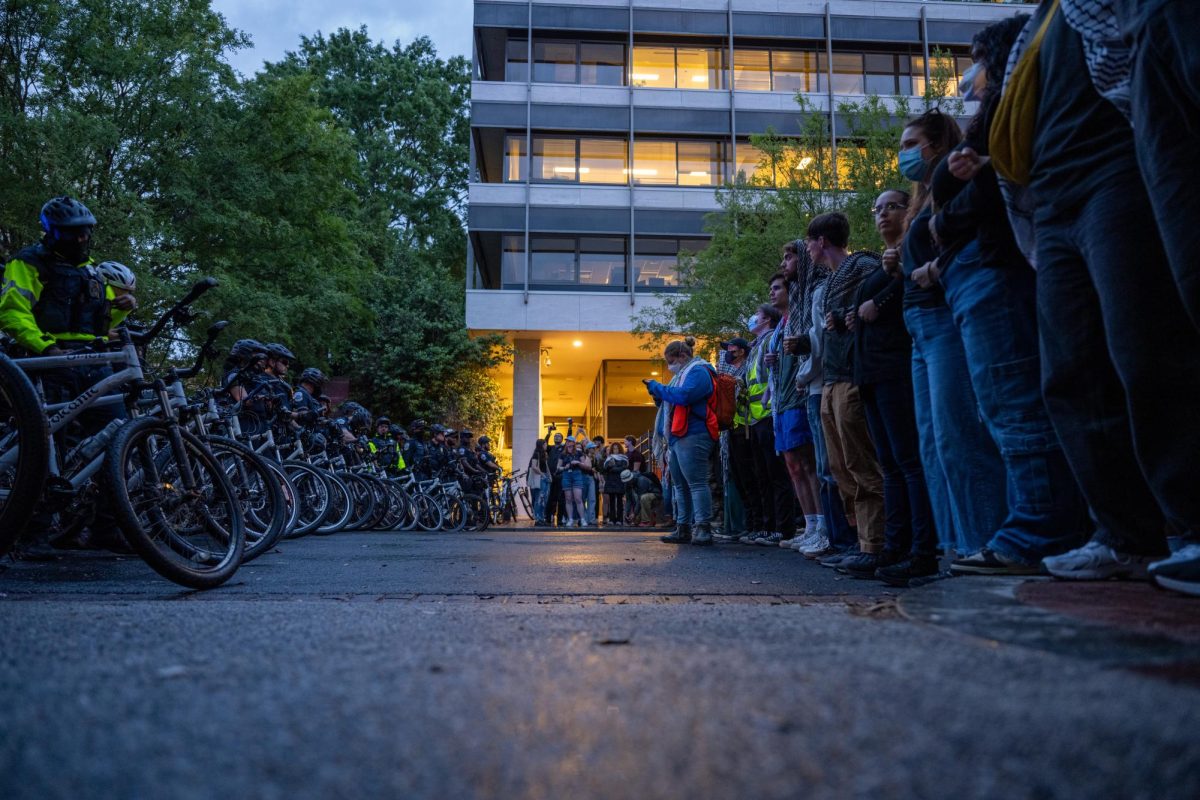Since I got my first pay check, sustainable shopping has been ingrained in my shopping practices — thrifting is the norm in the Bay Area, where I’m from. Nothing compared to the thrill of finding the perfect $14 Reformation jeans that retail for $148. But as I grew older, the amount of thrift-store gems I found shrunk, coincidentally right as thrifting gained popularity on social media.
All of a sudden, my favorite thrift stores were being converted into “vintage shops” where it became impossible to find an article of clothing under $50. The very notion of thrift stores in the United States are under attack by so-called vintage shops, individual resellers and fast fashion brands. These entities are restricting people who rely on thrifting for affordable clothing and curbing the potential of sustainable fashion.
As fast-fashion online retail sites like Shein gain more traction and popularity, the amount of clothing being consumed is increasing at an alarming rate and being upsold at astronomical prices. An online thrift company called ThredUp reported an 186 percent increase in the number of items listed by Shein and a 75 percent increase in the number of items from Pretty Little Thing since 2020. Both are major fashion companies that are known for exploiting their workers to produce massive amounts of low-quality clothing sold for extremely low prices.
Individual resellers on sites like Depop or Poshmark will then sell these clothing items, creating a competitive market where everyone, including traditional thrift stores, do the same thing simply because they can. This phenomenon is called “thrift store gentrification.”
I remember thumbing through a clothing rack at a “vintage store” when I came across the exact sweatshirt that all the students in my high school had been required to purchase for P.E. class. At first I thought it was funny seeing that sweatshirt with the box to write your name in it, still preserved. The humor disappeared when I checked the price tag and saw that the sweatshirt I had bought from my school for $15, just five years ago, was being marketed for $65. It prompted me to really consider at what point do we call something “vintage” and at what point is it just old?
If you’re looking at a 1987 rare preserved Hermes Kelly 32 handbag, it will obviously be upsold because those are truly one-of-a-kind items that aren’t made anymore. Unique items are consistent with the initial intent behind the title “vintage,” but there’s truly no need to be upcharging a Forever21 shirt from 2011 that’s on its last breath of life.
People should take up thrifting to reduce the negative environmental impact that the fashion industry has on the Earth, but the death grip the capitalist world has over sustainable and affordable clothing harms low-income households disproportionately more than any other community.
The overconsumption of thrift items by middle-upper class people in low-income areas takes away from people who need those items while also creating a competitive market where those thrift stores are now raising prices because people are willing to pay more.
The next time you find yourself in the mood to thrift, opt for a more sustainable strategy of supporting community-based organizations when possible, but don’t thrift in low-income communities. Also only buy what you need. As a shopaholic myself, I know how easy it can be to convince yourself that you simply must have something just because it’s a good deal.
And while it may be tempting, do not resell. Buying a large amount of clothing for cheap from a local organization and then reselling those pieces for an increased price online only perpetuates the threats of thrifting practices. These threats harm members of the community by limiting access to affordable clothing that people need to survive, not to sell on Depop for three times its initial price to make some extra pocket money.
The problem is not that there are not enough clothes, the problem is that people are not leaving the industry alone to function as it was intended. Like everything in this world, people see an opportunity to make money and make an entire business off of thrifting, but that defeats the very purpose behind the creation of thrift in the first place.
Anaya Bhatt, a sophomore majoring in political communications, is The Hatchet’s contributing social media director and a staff writer.


